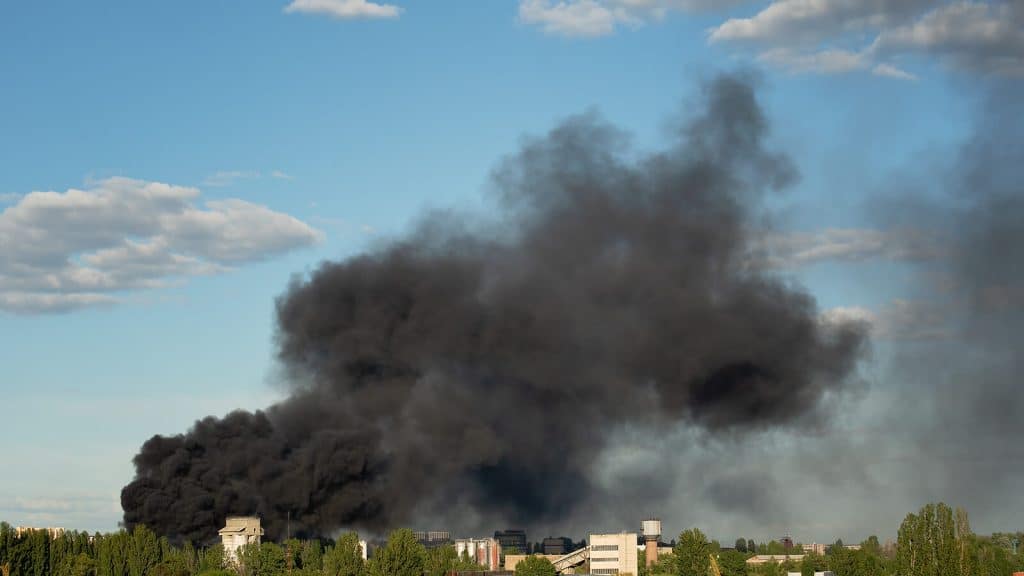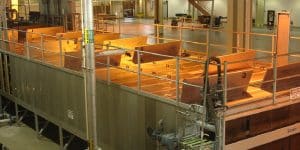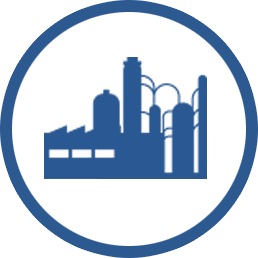The night of February 7th, 2008, was like any other night at the Georgia Sugar Refinery—that is, until a massive factory explosion lit up the Savannah, Georgia night sky. As a result of the blast, 14 people lost their lives, and over 40 others were injured.
The U.S. Chemical and Safety Board ultimately determined that the cause of the accident was due to sugar dust that had spontaneously combusted inside an antiquated factory with very few safety measures.
Dust explosions pose a very real risk in manufacturing plants, and it doesn’t take much to cause one—just add oxygen, sufficient quantities of dust in a confined space, and a heat source.
Read on to learn more about the many different types of combustible dust that can lead to a catastrophic explosion inside your factory or facility.
WHAT IS COMBUSTIBLE DUST?
OSHA defines combustible dust as:
“Combustible dusts include particles of any size and shape that present a fire, flash-fire,
deflagration, or explosion hazard. These can include powders, dusts, fines, fibers, flakes,
chips, chunks, metal sponge, swarf, and turnings.”
HOW DO COMBUSTIBLE DUST EXPLOSIONS HAPPEN?
Combustible dust explosions require five elements to occur:
- Oxygen
- Fuel (to burn)
- Ignition source (spark, heat, etc.)
- Dust particle dispersion in the right concentration
- Confinement of the dust cloud
EXAMPLES OF COMBUSTIBLE DUST MATERIALS
There is a wide range of materials that can combust when exposed to oxygen and an ignition source. Some of those include:
- Wood flour
- Egg white powder
- Iron
- Phenolic resin
- Powdered milk
- Soy flour
- Corn starch
- Sugar
- Powdered whey
- Powdered tapioca flour
- Powdered cork
- Corn flour
- Bronze
- Finely divided aluminum
- Zinc
- Sulfur
- Ground coal
- Lead stearate
- Magnesium
- Charcoal dust
- Peat
- Calcium acetate
- Lactose
- Ascorbic acid
- Sawdust
- Lampblack
- Ground coal
REAL-WORLD COMBUSTIBLE DUST EXPLOSION EXAMPLES
In addition to the 2008 Georgia Sugar Refinery explosion, there have been several other instances of dust explosions occurring in an industrial setting:
PET FOOD PLANT
In 2014, a grain dust explosion occurred at a pet food manufacturing plant in Arizona. Fortunately, no one was killed, but two workers suffered 3rd-degree burns after a welding contractor allegedly and accidentally kicked up some fine dust as he put his 3lb hammer down.
CORN MILLING FACILITY
In 2017, a grain dust explosion occurred at a Wisconsin corn milling facility that resulted in the death of one worker. This resulted in the U.S. Department of Labor proposing a 1.8 million dollar fine against the company, as reported by an OSHA news release.
PHARMACEUTICAL PLANT DUST EXPLOSION
In 2009, six people lost their lives in a dust explosion at a pharmaceutical plant in Kinston, North Carolina. The Chemical Safety Board reported that the explosion was caused by a fine plastic powder that had accumulated on a suspended ceiling over the manufacturing area.
SOLUTIONS TO MITIGATE COMBUSTIBLE DUST EXPLOSIONS
Dust explosions will occur when a vessel or structure tears or bursts due to confinement of the overpressures of a fast-burning material. Smart Machine Technologies offers safety solutions in the form of reusable Explosion Relief Doors that allow overpressure to safely vent before reaching critical mass.
Our Philadelphia Safety Devices explosion relief doors are calibrated overpressure valves that open up at pressures below the bursting strength of the vessel they are protecting. They have an activation range from a VERY low opening pressure that starts at 6” of Water Column (0.22 psi) to a maximum of 24″ Water Column (.87 psi).
PROTECT YOUR WORKERS AND PLANT
Combustible dust explosions happen when you least expect it—protect your building, equipment, and the lives of your workers with an explosion relief door from Smart Machine Technologies. Contact us below for more information.






 Contract
Contract Food & Bev
Food & Bev